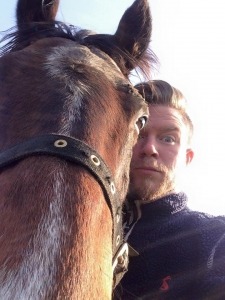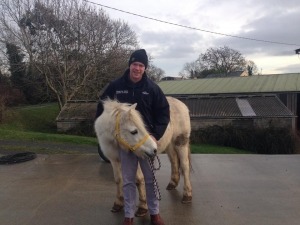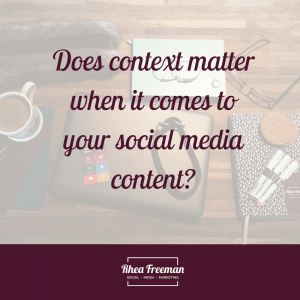This week’s ‘A few minutes with…’ features the lovely Liam Killen. Liam is the brains behind the Equestrian Creative Network – a brilliant resource for equestrian and country creatives. Find out more here.
 Tell us about you and your background. What made you want to start a business?
Tell us about you and your background. What made you want to start a business?
I grew up on the family farm in County Down, Northern Ireland. Did the usual Pony Club (East Down ’til I die) and riding club stuff. Did ok at eventing, did pretty well at tetrathlon – until I started smoking *smacks hand*. My parents have a small mares’ stud breeding flat thoroughbreds and my mum’s family own studs in Kildare, so it was almost inevitable that I would follow an equestrian path. I studied for a degree in Equine Management at CAFRE Enniskillen Campus and graduated in 2007. I really excelled in the marketing modules and my tutor in final year urged me to follow a career in marketing.
While at Uni I spent a summer interning in Washington DC for Habitat for Humanity in their marketing department. As a result I was able to get a foot in the door at PWC straight out of Uni, in their marketing devision in Belfast. I learned lots about how to be corporate and personality-less. I grew tired quickly and decided to work for a more relaxed organisation, Belfast City Council. I then did the silliest thing ever, and fell in love. DOH! However, it would mean a move to Manchester. My other half (yup, we’re still together nearly 10 years later) is a one of the directors of a software agency and they built a super easy-to-use website tool called PagePlay. I instantly saw its use within the equestrian industry and was given the opportunity to run my own equestrian devision. I don’t think they thought it would work. Fast forward 8 years… roughly 1/3 of all PagePlay sites are horsey!
In 2010, along with Rhea Freeman – you know her, you’re on her site right now – we set up the Equestrian Social Media Awards (ESMAs). The ESMAs were initially a vehicle through which to spread the good word of social media among equestrian business, and promote PagePlay as an added bonus. They soon became a beast. They ran for four years and by the end we had finalists from every continent and nearly every country. You can see all the finalists and winners’ acceptance speech videos here: http://www.equestriansocialmediaawards.com
The ESMAs exposed a massive gap in the market within the equestrian and rural sectors. During the ESMAs we were inundated by requests from the agencies behind the accounts, with requests for coverage for their work. It suddenly dawned on me… there isn’t a dedicated place for equestrian creative professionals to showcase their work. PR and marketing people are notoriously rubbish as practicing what they preach. Doctor heal thy self, and all that. So that’s where the Equestrian Creative Network came from.
The Equestrian Creative Network is a directory and news site for the creative side of the horse world; photographers, PRs, writers, designers and bloggers etc. Members showcase their work with content-rich portfolios and add news stories about their work, their clients’ work and provide valuable information geared specifically towards equestrian businesses. The ESMAs ended in 2014 when we adopted our son (thankfully I stopped smoking by then). Sadly at the moment there just isn’t enough time to run a global online award ceremony. Those were the days!
How is your business different? What makes your products special?
The Equestrian Creative Network is a niche within a niche. We are solely dedicated to showcasing

Liam and one of his parents’ broodmares.
creative talent in all its guises – so long as it’s horsey/country.
If you had to sum up your business in a few words, what would they be?
The place to go to find a creative pro.
Do you have a motto or ethos?
How can I tailor the Equestrian Creative Network’s reach for each member to get their content in front of the right eyes.
If you could give one piece of advice to an aspiring business owner, what would it be?
Go for it. It takes time and by goodness it’s a slog sometimes. But if you put the hours in and really take the time to build relationships you’re half way there.
One thing that helps you run the Equestrian Creative Network more effectively
Social media scheduling. Shhhh… I didn’t say that.
Best thing about running a business?
It’s a bit like raising a child. Through your efforts you see it flourish and develop – sometimes in ways you hadn’t thought when starting out. It’s a pain in the butt at times. But always worth it.
Worst thing about running a business?
Work/life balance is difficult to achieve at times. I need to stop myself. Should stop myself. Step away
from the emails!

Liam and his first pony, Foxy Lady. Still knocking about. Her retirement role is as a baby sitter for the foals.
Top business blog you follow
I like Social Media Examiner and like following the work of agencies like Social Chain.
Top business book you’ve read
Not really a business book as such, but Rich Dad Poor Dad changed how I look at money and how to use it.
Top business achievement
The ESMAs. Just phenomenal!
Where can we find you online (web, social)
http://www.equestriancreativenetwork.com
https://twitter.com/equinecreatives
https://twitter.com/abbeyviewequine
 ‘Are newsletters dead?’ I was asked this question on a training a few weeks ago. And I couldn’t say ‘no’ fast enough. Because I really don’t think they are. I think quality mailing lists are magic.
‘Are newsletters dead?’ I was asked this question on a training a few weeks ago. And I couldn’t say ‘no’ fast enough. Because I really don’t think they are. I think quality mailing lists are magic.


 Does context matter when it comes to your social media content? It’s something that I am constantly aware of, but a post I saw on Instagram last week prompted me to blog.
Does context matter when it comes to your social media content? It’s something that I am constantly aware of, but a post I saw on Instagram last week prompted me to blog. Tell us about you and your background. What made you want to start a business?
Tell us about you and your background. What made you want to start a business?

 If you have a look at Facebook and select the create ad option, you’ll work through it (after you’ve chosen your objective, etc.) until you get to targeting – which is what this blog is all about about. So, how does it work? Facebook targeting allows you to make sure your ad is shown to the people who have the most chance of wanting to buy or being interested in your product. You can target by geographical location (not just UK, a whole lot more specific than that!), gender, age, language, behaviours and interests (including pages they like), and you can even include or exclude people. You can even target connections. Targeting is great and can make sure your ad is seen by the right people, which is different to magazines. Let me work through one example before I leave you to ponder you own targeting and your next Facebook ad.
If you have a look at Facebook and select the create ad option, you’ll work through it (after you’ve chosen your objective, etc.) until you get to targeting – which is what this blog is all about about. So, how does it work? Facebook targeting allows you to make sure your ad is shown to the people who have the most chance of wanting to buy or being interested in your product. You can target by geographical location (not just UK, a whole lot more specific than that!), gender, age, language, behaviours and interests (including pages they like), and you can even include or exclude people. You can even target connections. Targeting is great and can make sure your ad is seen by the right people, which is different to magazines. Let me work through one example before I leave you to ponder you own targeting and your next Facebook ad.